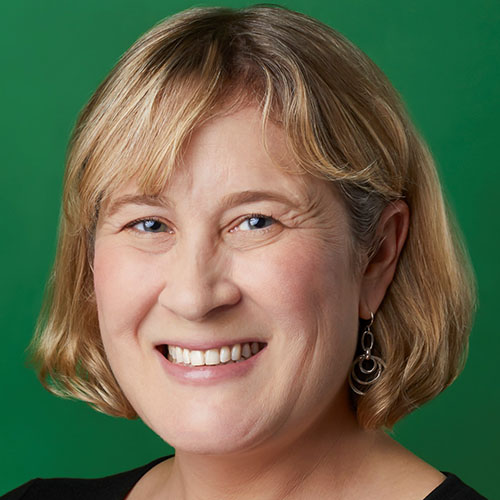 Kathy Reich
Kathy Reich
Director
Ford Foundation BUILD Initiative
There’s a lot of talk these days about the need to meet people where they are. I think that’s what Bridgespan’s insightful essay “The Trust-Based Philanthropy Conundrum” does best. It meets people—in this case, donors and the people who work for them—where they are.
Where too many of us are, unfortunately, is stuck. We are stuck in a place where a lack of trust in nonprofit leaders and organizations, and a desire to control our financial resources, lead us to restrict funding and otherwise behave in ways that impede progress and success for the very organizations, communities, and causes we seek to support.
To help unstick donors, “The Trust-Based Philanthropy Conundrum” looks to the behavioral sciences and the business world for analogies that may help funders understand how to begin trusting more and controlling less. It’s not the first time that Bridgespan has done this, of course. Bringing business thinking to the work of social change is deeply embedded in its DNA.
But this time feels different. This time, Bridgespan openly acknowledges that “borrowing best practices from the private sector should be done with care.” Bridgespan is still meeting donors where many of those donors are most comfortable, but it’s doing so with humility, and with an ever-so-gentle edge.
I found the lessons the authors draw from the world of venture capital especially compelling. In the Building Institutions and Networks (BUILD) program at the Ford Foundation, which I have the privilege to lead, we have embraced some similar principles. An independent evaluation of the program has found that these practices work quite well for nonprofits:
- Investing for the long term. BUILD grants provide unrestricted support for a full five years alongside dedicated, flexible funding for organizations to strengthen their people, finances, systems, and strategies for the long term.
- Understanding our value-add. BUILD grants emphasize the funder’s role as being one of accompaniment and support. Rather than dictate institutional strengthening priorities, for example, we ask partners to identify their own priorities and use their grants to invest in them. We offer a myriad of additional capacity-building tools, resources, and learning cohorts, but all of them are optional.
- Eschewing one-size-fits-all approaches. No two grantee partners are alike, so each BUILD grant looks different. Grant sizes vary depending on the size, needs, and stage of organizational development. Some grantee partners ask for and receive extensive accompaniment from program officers and consultants; with others, we maintain more distance.
More on Trust-Based Philanthropy
- Read Bridgespan’s essay
“The Trust-Based Philanthropy Conundrum” - See more perspectives from the field.
As a result of BUILD grants, the evaluation found that grantee partners delivered stronger programs and greater impact.
Bridgespan’s caution against viewing trust as a binary, all-or-nothing choice also resonates with me. As we’ve experienced in BUILD, trust is not a state of being but a process: an ongoing series of choices that, over time, create new relationships and new understandings. Importantly, it’s also a two-way street. Not only do donors need to learn to trust grantee partners, but grantee partners need to learn to trust donors. When Ford first began making BUILD grants, many of our partners took time to trust us. It took a lot of reassurance on our part to convince them that we would not revoke or restrict their grant at the first sign of trouble.
In building trust, I’ve learned that the most important thing to do is to start somewhere–to meet people where they are. For a donor, building trust doesn’t have to begin with a five-year unrestricted grant (although I encourage you to try it!). It can begin with something as modest as streamlining report processes or compensating grantee partners for time spent organizing site visits or preparing proposals. Trust-building is a bit like exercise–even if you start small, you can ultimately realize big gains, provided that you stick with it, increase your efforts over time, and vary your routine, especially if something’s not working.
What resonated with me the most about the essay, however, was the authors' emphasis on the need for philanthropists to fundamentally shift our mindsets about philanthropy. They start by urging philanthropists to reflect on lessons from behavioral science and venture capital, but they also implore us not to end there.
Here, I fervently wish that the essay had gone further. I wish Bridgespan had explored the implications for philanthropy of feminist theory, faith traditions, indigenous approaches to community well-being, and systems thinking, to name just a few. For example, many indigenous organizations prioritize collective decision making and introspective processes that are deeply rooted in culture and community dynamics. Working through these processes requires time and doesn’t match up well with the rigid timeframes and deliverables of many Western donors.
I also wish Bridgespan had more explicitly acknowledged that even trust has a dark side. It is much easier to trust those we know and those who share our social and cultural identities. Behavioral science offers myriad examples of this, as does for-profit investing. In the venture capital world, the vast majority of people making decisions are white men, and guess what? So are the vast majority of their investees.
Especially in sectors like institutional philanthropy that are dominated by white, economically privileged people, a desire for trust can lead to unintended consequences. It can reinforce and sustain racism, patriarchy, class prejudice, and political polarization. I share Bridgespan’s belief that trust is a critical element of social impact. And I am desperately looking for mindset shifts and practices that will allow us to build trust across boundaries of race, gender, class, and political tribe.
I hope that’s the next essay. Because while we have to meet people where they are, we don’t want them to stay there.


